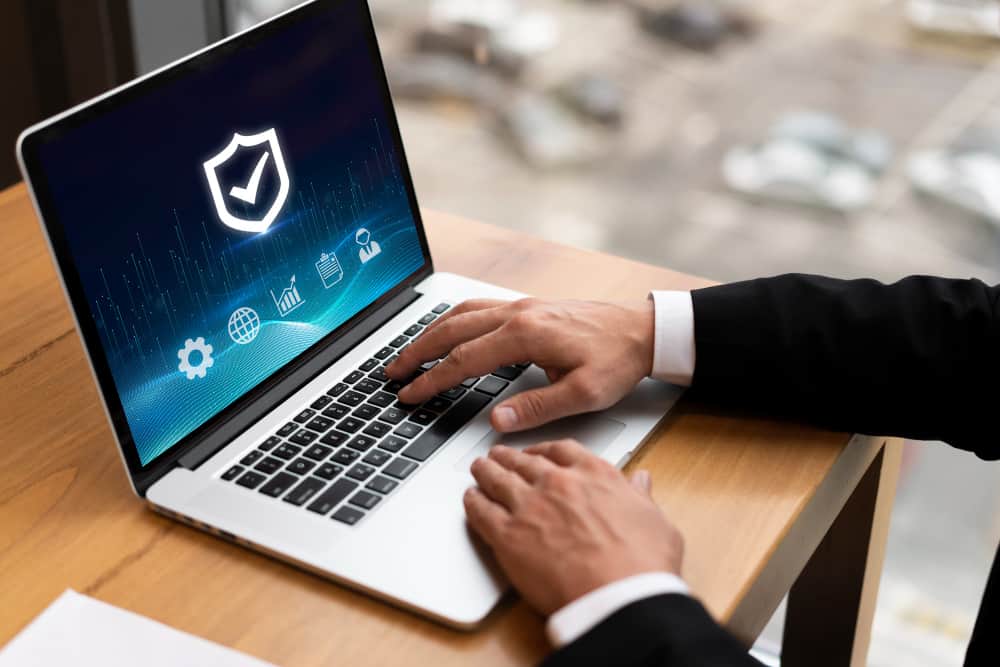5G has got everyone talking, and for a good reason. The fifth-generation wireless network brings with it a wealth of opportunity, especially in terms of remote capabilities made possible with IoT devices and enhanced connectivity. This network promises faster transmission speeds, more reliability, and low latency which can dramatically impact several different industries and sectors. The healthcare industry is one of the industries that is expecting to see a radical change in operations and procedures. 5G will create a new healthcare ecosystem driven by efficiency, effectiveness and improved patient care. This technology is also set to positively impact the ability of first responders to save more lives.
Table of Contents
ToggleThe development of a new healthcare ecosystem with 5G
Healthcare systems globally, are made up of many different moving parts, departments, systems, and processes that are all connected. Information and data play a significant role in the functionality of these systems, and 5G adoption is set to impact this.
5G is capable of achieving speeds approximately 100 times faster than the current 4G network and is able to handle more connections. What does this mean in the context of healthcare? It enables:
- Faster transmission of critical medical data, information, and insights will save lives
- Increased access to healthcare services
- Enhance connecting systems to ensure that first responders are able to get to hospitals faster and that doctors have all the information needed on the patient before they arrive
- In the case of COVID-19, the monitoring patients without physically being in contact, by using remote monitoring and IoT devices
- The use of AR and VR technology to test and simulate complex procedures and operations to enhance the accuracy

5G will allow the healthcare sector to be more:
- Predictive – 5G is transforming patient care, especially where risk reduction is concerned. 5G and the relative IoT devices allow for consistent and fast flow of vital patient data that include vital signs as well as lifestyle and social elements that may be affecting their health. With access to this information and insight healthcare professionals can predict, diagnose, and treat patients faster and more effectively.
- Preventative – 5G allows for preventative actions that have been seen globally as a result of the COVID-19 pandemic. IoT devices and 5G technology have been used in different markets to track, trace, and manage the virus. Many countries have turned to innovative software and apps to alert people who have come into contact with a COVID positive person. They are then encouraged to get tested and remain in isolation to prevent the spread of the virus.
- Personalised – 5G and leading-edge technologies are able to transform different aspects of patient care as they allow for real-time monitoring. Many healthcare sectors are turning to remote monitoring devices that consistently feed patient data to care, professionals. Armed with this information and with the ability to track vitals, symptoms, and reactions, healthcare professionals are able to personalise patient care.
- Participatory – 5G will allow patients to take a more active role in their care and engage with healthcare professionals on their diagnosis, wellbeing, treatments, and outcomes. This will not only improve their general health and quality of life but also reduce overall costs on the healthcare system.
With 5G, the healthcare ecosystem will become more proactive, efficient, and productive thereby saving time, resources and lives.

5G use cases in the healthcare sector
There are several different 5G enabled IoT innovations that are being implemented in healthcare systems globally. These use cases include:
- Large file transmissions – 5G infrastructure and architecture will allow for a faster and more reliable transfer of large medical imagery files. This will enable doctors to treat patients faster and more efficiently as well as increase the quality of care.
- Telemedicine – 5G is expected to facilitate an increase in telemedicine and access to healthcare for many. 5G supports real-time high-quality video and calls which are required for connecting patients and doctors using telemedicine. The growth of the global telemedicine market size was estimated at USD 41.4 billion in 2019 and is expected to witness a CAGR of 15.1% by 2027. Telemedicine has also been used globally, as a result of the COVID-19 pandemic, to reduce the number of patients coming into the hospital and to curb the spread of the virus. This technology allows healthcare providers to provide quality and personalised care from afar.
- Increased use of augmented reality (AR), virtual reality (VR), and spatial computing – 5G is set to enhance medical procedures and deliver more innovative and less invasive treatments using AR, VP, and spatial computing. This technology can be used to simulate complicated medical scenarios for training purposes or complicated surgeries or operations. This provides healthcare professionals with enhanced visibility and insight that will enable them to provide more effective and efficient patient care. The low latency aspect of 5G also opens up an opportunity for remote-controlled surgery. The future could very well have specialists performing surgeries remotely, from different locations globally. The use of this innovative technology partnered with 5G capabilities will enhance reliability, speed, image quality, and allow for the fast transfer of information for efficient decision making. This will enable patients to receive specialist care, without the need to travel to other countries, and will allow healthcare professionals to learn new skills remotely. With this technology, patients will have access to more treatment and care options – which could be lifesaving.
- Reliable, real-time remote monitoring and wearable devices – 5G is set to benefit the growing number of medical IoT devices and wearables that make it possible to monitor patients remotely. These devices allow medical practitioners to monitor patients’ vital signs, medication adherence, blood pressure, etc. to provide more personalised care and to gain critical information needed to make informed and faster healthcare decisions.
- Robotics – over the next few years, we are expecting to see the use of robotics impact the healthcare sector, especially concerning surgical cloud robotics. This technology will allow for different surgical robots to be connected to a cloud platform and exchange information in a fast, reliable, and secure manner. 5G technology will be the basis for this and will allow these robotics to work wirelessly while utilising the vast amounts of data stored on the cloud to enhance patient care, treatment, and outcome.
As explained above, 5G has many use cases in the healthcare sector, but we cannot discuss healthcare without discussing first responders and how it will assist in saving lives.

5G and the impact on first responders for saving lives
First responders are often the first people on the scene of an accident, fire, or any disaster. They are responsible for ensuring the safety and health of the people affected by these situations. The introduction to 5G has led to several safety-focused innovative devices being developed that will not only enhance the safety of first responders but their ability to act quicker and ultimately save more lives. These devices include:
- Augmented reality firefighting helmets –These helmets will allow firefighters to see through smoke and complete darkness and breath through toxic gas to find victims faster and safer. These helmets will also be able to help firefighters identify falling objects as well as holes in the floor that they wouldn’t usually be able to see and to transmit live visuals of what is happening to teams on the outside. This technology enhances visibility, provides a clearer picture of the situation, enhances safety, and will end up saving many lives.
- 5G drones – drones have already been used in many emergencies, but the low latency and high-speed capabilities of 5G are set to amplify this. First responders can use drones to get a full view of any situation which facilitates effective decision making and also enhances safety. This can be used in the case of a burning building, to locate missing persons, in hostage situations, natural disasters, etc.
- Life-saving assistants powered by artificial intelligence – AI is being used to help first responders get the essential information that they need to make informed and safe decisions. These life-saving assistants can process vast amounts of data while filtering out the noise of sirens, crackling flames, and screams. They are then able to provide firefighters with essential information related to how fast the fire is developing, what materials in the building could impact the fire as well as how hot the fire is. It can then predict how much time the firefighters have to secure the building and save those in it.
- 5G connected smart devices – first responders may also soon be linked to several smart devices that can track elements like heart rate, respiration rates, and how much oxygen the firefighters have left in their packs. This will provide valuable insight into the firefighter’s health and the conditions that they are facing, and alert them to any critical problems.
While 5G will improve the healthcare sector it will also enhance the safety of first responders and will provide them with the ability to act faster in critical situations which in turn, will save more lives.
Conclusion
Over the next few years, 5G is going to have a significant impact on the healthcare sector and the way in which first responders operate in dangerous situations. With faster transmission speeds, increased bandwidth, and connectivity capabilities, 5G will enhance healthcare systems, processes, and procedures by improving efficiency. This will mean that more people will have access to the care they need, faster diagnoses, and improved patient outcome and experience. Many countries globally are already starting to utilise this technology in the form of remote patient monitoring using wearables, telemedicine, VR, and AR. 5G will also make it possible for first responders to act faster, save more lives, and make informed decisions relating to dangerous situations. We expect to see more healthcare, and first responder innovations being designed and developed as 5G becomes more accessible globally.
Explore the Power of CDR

As the Global Head of Marketing and Business Development with 20 years of experience, Agnieszka’s expertise lies in the practical implementation of digital and traditional marketing strategies for B2C and B2B companies. Through her long-term, client-focused, strategic approach, and branding experience, she continues to develop innovative marketing plans that yield significant results. Now working in the SaaS industry, she oversees a multitude of solutions within the telecommunications industry including Customer Experience & Self-service, VAS, NextGen, IoT, FinTech, and Advanced Analytics.





